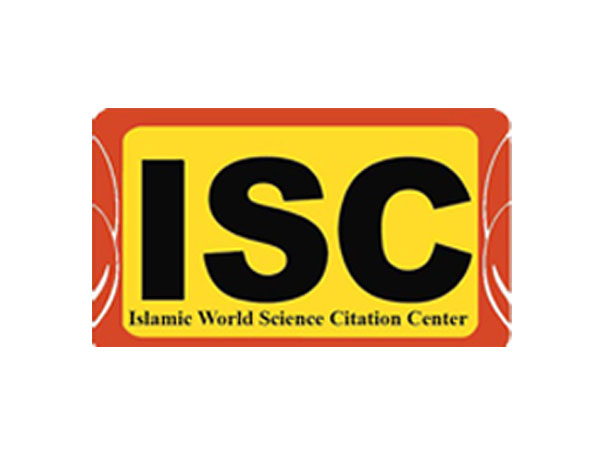معرفي نشريه
علمی
آخرین مقالات منتشر شده
-
دسترسی آزاد مقاله
1 - Evaluation of slope disaster susceptibility based on GIS and three-level fuzzy evaluation method
Ming Yangشماره 4 , دوره 15 , پاییز 2023 -
دسترسی آزاد مقاله
2 - Study of development cycle of down ramp in underground metal mine
Nirlipta Nayak Harinandan Kumar Suhel Ahmedشماره 4 , دوره 15 , پاییز 2023 -
دسترسی آزاد مقاله
3 - Earthquake ground-motion prediction in the Khalkhal region, NW Iran
Akram Alizadeh Fatemeh Salehiشماره 4 , دوره 15 , پاییز 2023 -
دسترسی آزاد مقاله
4 - Geochemistry and tectonomagmatic environment of Eocene volcanic rocks in the Southeastern region of Abhar, NW Iran
Masoud Nazari Mohammad Ali Arian Ali Solgi Reza Zareisahamieh Abdollah Yazdiشماره 4 , دوره 15 , پاییز 2023 -
دسترسی آزاد مقاله
5 - The petrology and geochemistry of Sorkheh-Dizaj intrusive rocks in northern Zanjan and its effects on recovery of LREE from tailingby digestion-water leaching processes, Iran
Ahmad Adib Esmaeil Rahimiشماره 4 , دوره 15 , پاییز 2023 -
دسترسی آزاد مقاله
6 - First report of the SardinellaSardinites (Heckel, 1850) in the Kond formation in the Saran area, Central Alborz in Iran
Saeedeh Senemari Leila Fazli Alireza Cheginiشماره 4 , دوره 15 , پاییز 2023
پربازدیدترین مقالات
-
دسترسی آزاد مقاله
1 - Evaluation of slope disaster susceptibility based on GIS and three-level fuzzy evaluation method
Ming Yangشماره 4 , دوره 15 , پاییز 2023 -
دسترسی آزاد مقاله
2 - Geochemistry and tectonomagmatic environment of Eocene volcanic rocks in the Southeastern region of Abhar, NW Iran
Masoud Nazari Mohammad Ali Arian Ali Solgi Reza Zareisahamieh Abdollah Yazdiشماره 4 , دوره 15 , پاییز 2023 -
دسترسی آزاد مقاله
3 - Study of development cycle of down ramp in underground metal mine
Nirlipta Nayak Harinandan Kumar Suhel Ahmedشماره 4 , دوره 15 , پاییز 2023 -
دسترسی آزاد مقاله
4 - First report of the SardinellaSardinites (Heckel, 1850) in the Kond formation in the Saran area, Central Alborz in Iran
Saeedeh Senemari Leila Fazli Alireza Cheginiشماره 4 , دوره 15 , پاییز 2023 -
دسترسی آزاد مقاله
5 - Earthquake ground-motion prediction in the Khalkhal region, NW Iran
Akram Alizadeh Fatemeh Salehiشماره 4 , دوره 15 , پاییز 2023 -
دسترسی آزاد مقاله
6 - Facies analysis, depositional environment and sequence stratigraphy of the Permian Ruteh Formation in north of Mahabad (NW Iran)
Youssef Mohammadi Moghaddas Rahim Mahari Rahim Shabanian Adel Najafzadehشماره 1 , دوره 14 , زمستان 2022 -
دسترسی آزاد مقاله
7 - The petrology and geochemistry of Sorkheh-Dizaj intrusive rocks in northern Zanjan and its effects on recovery of LREE from tailingby digestion-water leaching processes, Iran
Ahmad Adib Esmaeil Rahimiشماره 4 , دوره 15 , پاییز 2023 -
دسترسی آزاد مقاله
8 - Relationship between Rare Earth and Radioactive Elements
Seyyed Saeed Ghannadpour Ardashir Hezarkhaniشماره 2 , دوره 15 , بهار 2023 -
دسترسی آزاد مقاله
9 - Geological and engineering geological characteristics of surface alluviums in the Gorgan city
Rasool Yazarloo ماشالله خامه چیان محمدرضا نیکودلشماره 2 , دوره 14 , بهار 2022 -
دسترسی آزاد مقاله
10 - Study of A-type granite from the South of Lake Urmia, Sanandaj-Sirjan Zone: implications for the Neotethys opening in Iran
Nasser Ashrafi Mehrdad Pourmohsen Morovvat Faridazadشماره 2 , دوره 15 , بهار 2023








